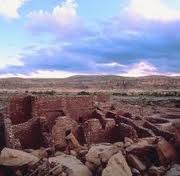Harding University, a
Christian college located in Searcy, Arkansas was originally founded as a
Methodist Episcopal women’s college called Galloway. This story started when
Galloway Women’s College was at its peak. During this time it was considered one
of the finest educational institutions in the south. Young ladies who attended the
college in the late 1800s and early 1900s were taught a curriculum that
included homemaking and secretarial training. The school was also known for its
music and art curriculum.
Sometime before 1934 a sweet
young student by the name of Gertrude, was found dead at the bottom of an
elevator shaft sending shock waves through the school. Galloway was small so
most of the students and staff knew her. How Gertrude ended up in the shaft is
still a mystery. Reports at the time stated that late one November evening
while most of the school’s residents slept Gertrude returned from town with her
date after attending a small party. Her date bid her farewell at her dorm and
Gertrude entered the hall and climbed the stairs to her room.
At this juncture the story
gets fuzzy but it was reported that a blood-curdling scream awakened many girls
in the hall at which point chaos took command of the dorm. One young witness
saw a huge, dark form hurdle by where she was standing and disappear down the
stairs. A hysterical housemother finally calmed everyone down enough to call
the police who found Gertrude at the bottom of the elevator shaft dead.
Her death came as a major
blow to the normally peaceful college. Legend states that Gertrude’s fellow
students insisted she be buried in the pretty, frilly white gown she wore her
last night alive. The police never found the supposed killer so her death was
deemed an accident. This ruling unfortunately did not save the college’s
reputation. Many parents withdrew their daughters and the school began to
falter financially.
Several years after
Gertrude’s death a freshman woke up at midnight and walked down the hall to get
a drink of water. There was a full moon so she had no trouble seeing her way,
as she passed the partially boarded elevator shaft she peered through a crack.
She stifled a scream and barely managed to return to her room. Feeling faint
she woke up her roommate. She told her, “I could see her in the moonlight,
sitting there in a white evening gown, combing her platinum-blonde hair.” She
then dropped to the floor in a faint.
Her roommate mustered her
nerve and went down the hall to take a look. Another student awakened by her
movements found her plastered against the wall across from the elevator shaft.
She gasped and finally managed to say, “She-she-walked right through the wall
to the first floor. She was too terrified to say anything else. The Dean of
Women was called and in an effort to reassure the scared girls she peered down
into the depth of the shaft. “Why there’s nothing down there, except an old
comb someone dropped.”
Soon after this the Galloway
Women’s College closed its doors for the last time. Years later the original
building was torn down. Many of its old bricks were used in the construction of
what is now Harding Universities’ Music building, which is located 300 yards
from the original site. Some of these original bricks were also used to make a
path that leads from the old site to the new building.
Today it is along this path
that several students have been stopped dead in their tracks by the sight of a
young woman, dressed in a white lace gown, sweeping by them. This apparition is
seen following the path back and forth from the old site to the music building.
Several students making a recording in the music building late one night picked
up footsteps when no one else was in the building. Gertrude or Gertie Sue
as the students and staff fondly call her is often seen at Harding today.











.jpg)













